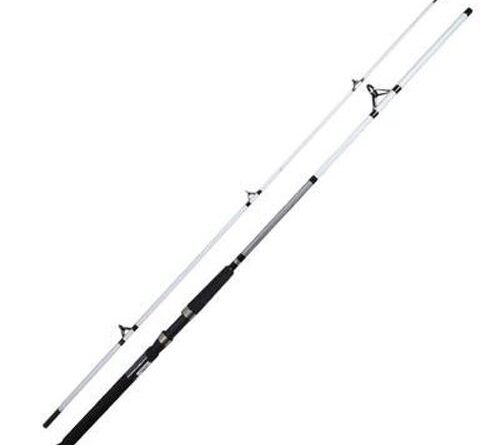Fly fishing is a captivating and artistic type of fishing that calls for specific skills and gear. We will go into great detail in this extensive guide about setting up a fishing rod for fly fishing, offering professional advice and step-by-step instructions to help you get the most out of this unusual and satisfying kind of fishing. Check out cheerfulfisherman.com, your go-to source for improving your fly-fishing experience, for a plethora of fishing gear and professional guidance.
Understanding the Basics of Fly Fishing
Let’s quickly go over the core ideas of fly fishing before we get started setting up your rod:
- Casting Technique:
Specialized Approach: Fly fishing is a technique used to simulate the movement of insects on the water’s surface by releasing a fly line that is almost weightless. Success in casting requires a mastery of the technique. - Artificial Flies:
Impersonating Insects Fly fishing uses artificial flies that mimic the appearance and movement of insects, as opposed to conventional bait or lures. Feathers, fur, and other materials are used to create these flies. - Lightweight Fly Rods:
Precision: Fly rods are made to be flexible and lightweight, which enables the fly to be presented delicately. The type of fishing and the species of fish being targeted determine the appropriate rod weight. - Fly Reels and Lines:
Equilibrated Framework: An essential part of any fly fishing setup is the fly line and reel. The fly line, which is essential for both casting and retrieving the fly, is kept on the reel.
Setting Up Your Fly Fishing Rod: Step by Step
- Choosing the Proper Fly Rod:
Things to Consider Select a fly rod appropriate for the species you are targeting and the fishing conditions. Typically, a weight designation (such as 4WT or 6WT) is labeled on rods to indicate which conditions they are suitable for. - Aligning the Line and Fly Reel:
Stabilized System: Make sure the line weights and fly reel are compatible. The best casting performance is ensured by a balanced system. - Joining the Reel and Rod:
a safe connection To firmly fasten the fly reel, use the included reel seat on the fly rod. To stop the reel seat from moving while casting, tighten the locking mechanism. - Using Guides to String the Fly Line:
Thread with Caution: Start at the tip of the rod guides and work your way toward the reel with the thin end of the fly line threaded through. - Fastening the Tippet and Leader:
Tapered Connection: Attach the fly line’s leader to its terminus. Usually tapered, the leader offers a smooth transition to the tippet, which is the last thin section that attaches to the fly. - Selecting the Appropriate Fly:
Make a Match: Choose a fly that is compatible with the insects that are found in the fishing area. Various fly patterns correspond to different phases of insect life cycles. - Keeping the Fly Attached to the Tippet:
Tight Knots: Secure knots, like the surgeon’s knot or the improved clinch knot, should be used to tie the selected fly to the tippet. - Rehearsing Casting Methods:
Development of Skills: Before you hit the water, spend some time honing your casting technique in an open space. Make sure your casting motion is controlled and fluid.
Tips for Fly Fishing Success
- Patience and Observation:
Give It Your All: Look for indications of fish movement and insect activity in the water. Fly fishing is a patient sport because it frequently requires waiting for the ideal opportunity. - Comprehending Water Currents:
Determining Strategic Location: Find out how insects move in relation to water currents and modify your positioning accordingly. Fish tend to cluster in areas where there is a consistent supply of food. - Technique of Presentation:
Natural Drift: Learn how to present the fly on the water in a naturally occurring manner. A natural drift increases the likelihood of attracting a strike by imitating the movements of insects. - Suitable Fly Line Administration:
Line Control: Use good line management techniques to keep your casting experience seamless and free of tangles. Techniques for stripping and mending that are correct are crucial.
Conclusion: Embark on Your Fly Fishing Journey
A thorough grasp of the subtleties of fly fishing techniques and meticulous attention to detail is necessary when setting up a fishing rod. A plethora of fishing equipment and professional advice can be found on cheerfulfisherman.com to improve your fly-fishing experiences. Indulge in the artistic pursuit of fly fishing and allow the captivating dance of the fly line on the water to carry you away to a realm where accuracy collides with the natural world. You can make memorable catches on the fly and enjoy every cast if you have the right information and gear.







3 Comments
Comments are closed.